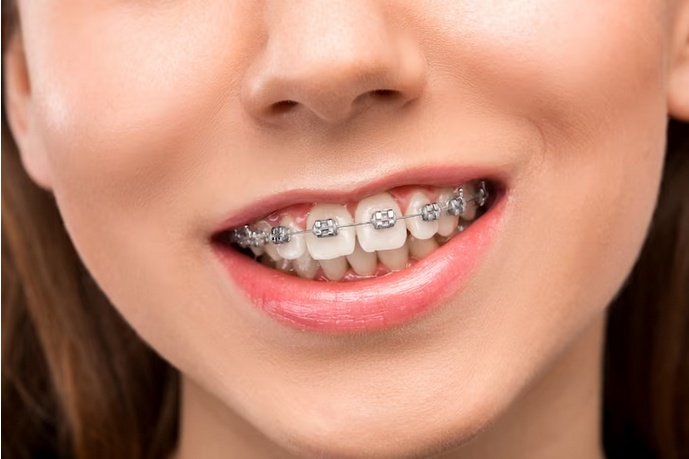Introduction
In the pursuit of achieving a confident and radiant smile, dental innovations have continually evolved to provide discreet and effective solutions. Lingual braces stand as a prime example, offering an inconspicuous teeth-straightening option that has gained popularity due to its hidden nature and remarkable results. This comprehensive guide explores the world of lingual braces, delving into their mechanics, benefits, considerations, and overall impact on dental health and aesthetics.
Understanding Lingual Braces
Lingual braces, often referred to as "invisible braces," are an orthodontic treatment that offers an alternative to traditional braces. Unlike conventional braces that are attached to the front of the teeth, lingual braces are affixed to the back (lingual) surfaces of the teeth, making them virtually invisible from the outside. This unique placement allows for discreet correction of dental misalignments while addressing concerns such as crooked teeth, overcrowding, and bite issues.
Mechanics and Composition
Lingual braces are composed of brackets, archwires, and bonding agents, similar to traditional braces. However, their design is tailored to fit the curvature of the lingual surfaces, ensuring optimal comfort and effectiveness. The brackets are custom-made using advanced technology to precisely match the patient's dental anatomy. These brackets are bonded to the back of the teeth, and archwires are then threaded through them. Over time, as adjustments are made, the archwires gently guide the teeth into their desired positions.
Benefits of Lingual Braces
-
Aesthetics: The primary advantage of lingual braces is their discreet nature. Since they are hidden behind the teeth, they do not affect the wearer's appearance during the treatment period. This makes them particularly appealing to individuals who are self-conscious about wearing visible braces.
-
Effective Treatment: Lingual braces provide effective results in aligning teeth and correcting bite issues. The customization of the brackets and archwires ensures a tailored treatment plan, leading to precise tooth movement.
-
Comfort: Lingual braces are designed to minimize discomfort and irritation. Their placement on the back of the teeth reduces the likelihood of friction against the lips and cheeks, resulting in a more comfortable experience compared to traditional braces.
-
Speech Improvement: While some users may experience minor speech adjustments initially, lingual braces generally have less impact on speech compared to traditional braces that are placed on the front of the teeth.
Considerations and Challenges
While lingual braces offer a range of benefits, it's important to consider certain factors before opting for this treatment:
-
Cost: Lingual braces often come with a higher price tag compared to traditional braces. The customization and specialized techniques involved in their application contribute to the increased cost.
-
Adjustment Period: Just like any orthodontic treatment, lingual braces require an adjustment period. The initial days after placement might involve discomfort and speech adjustments, but these issues tend to resolve as the wearer gets accustomed to them.
-
Oral Hygiene: Maintaining oral hygiene can be more challenging with lingual braces due to their placement. Thorough brushing and flossing techniques become even more crucial to prevent plaque buildup.
-
Suitability: Lingual braces may not be suitable for all cases, especially those with severe misalignments or complex dental issues. A consultation with an experienced orthodontist is essential to determine the most appropriate treatment plan.
Impact on Dental Health and Aesthetics
The impact of lingual braces on dental health and aesthetics is significant:
-
Improved Self-Confidence: Lingual braces can contribute to enhanced self-esteem during the treatment period, as wearers don't need to worry about the appearance of visible braces affecting their social interactions.
-
Corrected Dental Issues: Lingual braces effectively address a range of orthodontic concerns, including crowded teeth, gaps, overbites, underbites, and crossbites. The precise customization of treatment aids in achieving a healthier bite and aligned smile.
-
Long-Term Oral Health: Properly aligned teeth are easier to clean and maintain, reducing the risk of cavities, gum disease, and other dental issues. Lingual braces, by promoting optimal dental alignment, can have a positive impact on long-term oral health.
Conclusion
Lingual braces have revolutionized the field of orthodontics by offering a discreet and effective solution for teeth straightening. Their inconspicuous nature, combined with the benefits of effective treatment, improved aesthetics, and enhanced self-confidence, make them a popular choice among individuals seeking orthodontic correction. While they come with certain considerations and challenges, the potential for a healthier, aligned smile and long-term oral health cannot be understated. As with any dental treatment, consulting with a qualified orthodontist is crucial to determine if lingual braces are the right option for individual dental needs. Embracing the potential of lingual braces is, quite literally, unlocking smiles that radiate confidence and well-being.


No comments yet